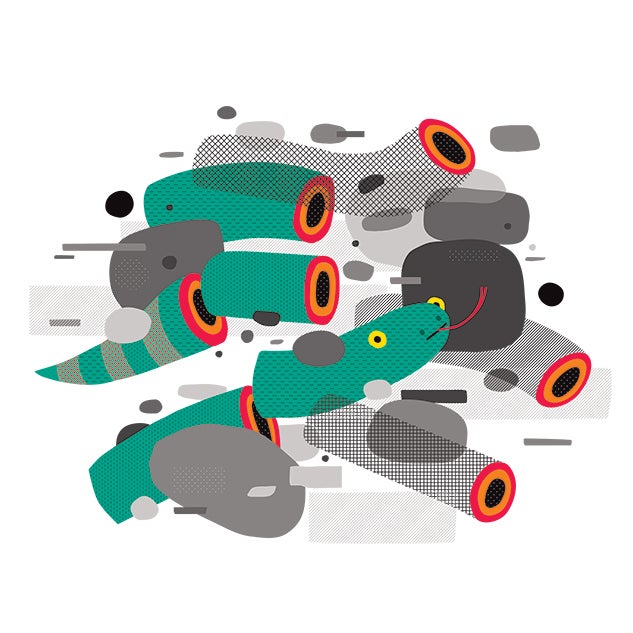We Don’t Know: How to Engineer Large Organisms
Associate Professor of BioSciences Matthew Bennett explores the boundaries between experimental and theoretical molecular systems biology.

Spring 2018
By David Levin
Illustration by Alex Eben Meyer
Synthetic biology is really an engineering discipline, but what we can’t do right now is engineer large organisms. What if we could create a snake to go into rubble to find survivors of an earthquake or engineer a tree to grow into a house? Can we use synthetic biology to terraform planets and make them habitable for us? We think all these things are possible, but we don’t know how to get there.
At this stage, synthetic biology is very localized. We can change one or two genes to alter a genetic pathway and influence behavior in a small way. At the molecular level, we still have lots to learn — every cell has many thousands of genes, and we don’t know what a large portion of them do, nor do we understand the intricate relationship between genes and proteins within a cell.
We’ll need to figure all that out before we can engineer large-scale behavior into cells. It’s not a matter of if we can do that — it’s a matter of when. Life all around us has already done it for millions of years. It’s why we have massive baobab trees or cuttlefish with incredible skin that can change color instantly.
We could have a huge impact on human health if we could engineer safe crops that could better feed the world or make synthetic probiotics to treat disease. One of the exciting things for me is that we might be able to start engineering these forms ourselves for practical applications.
